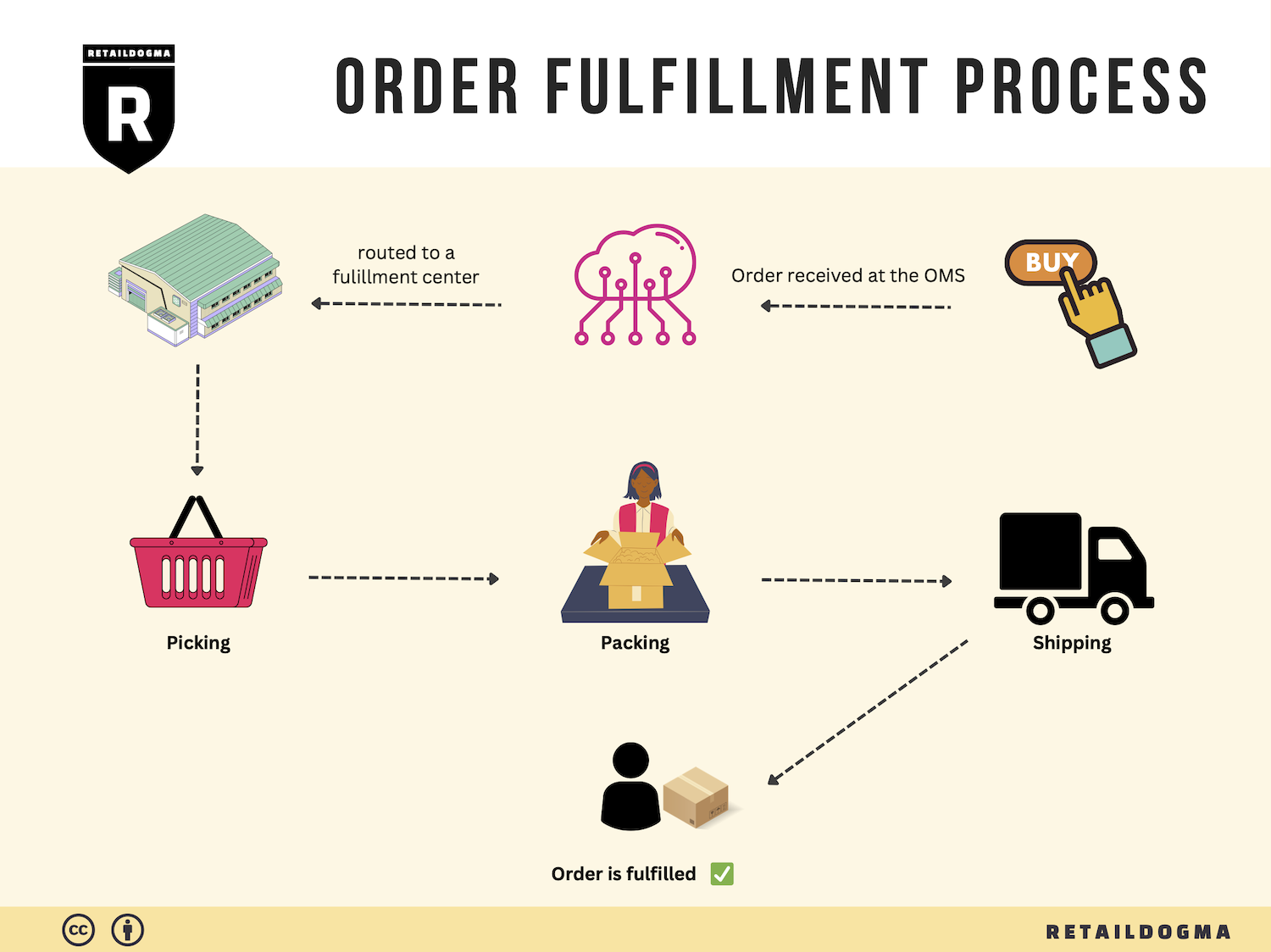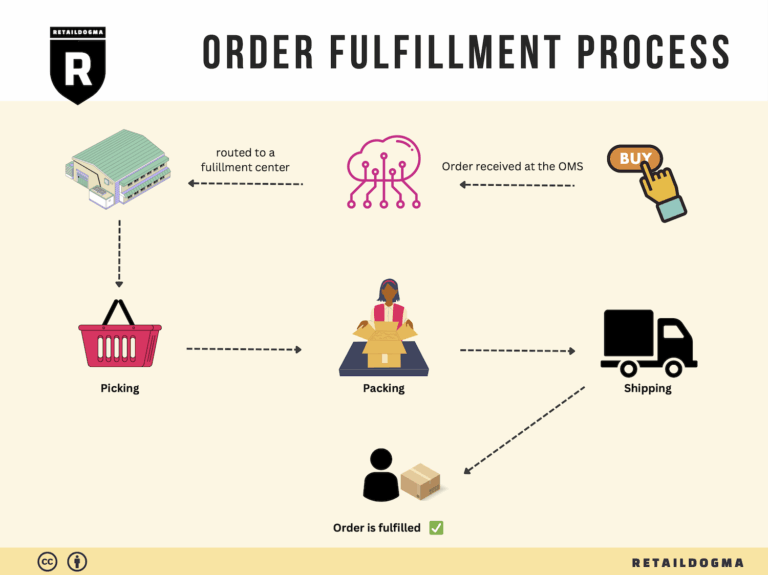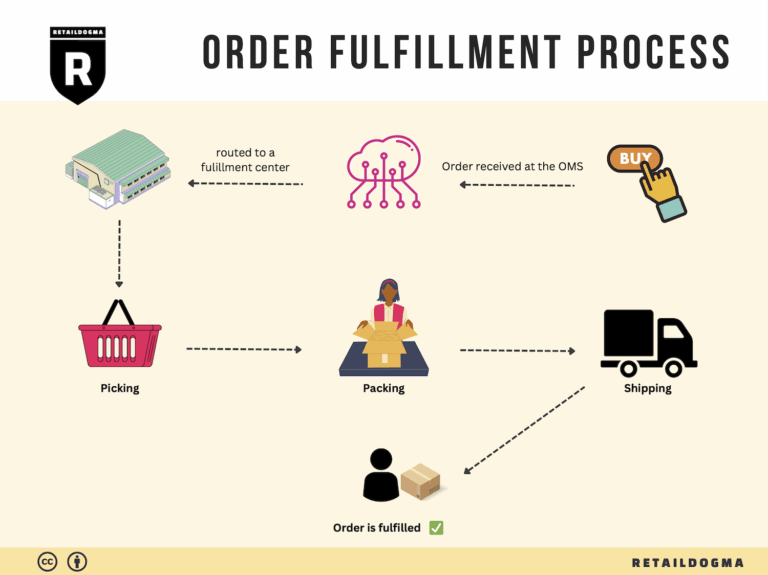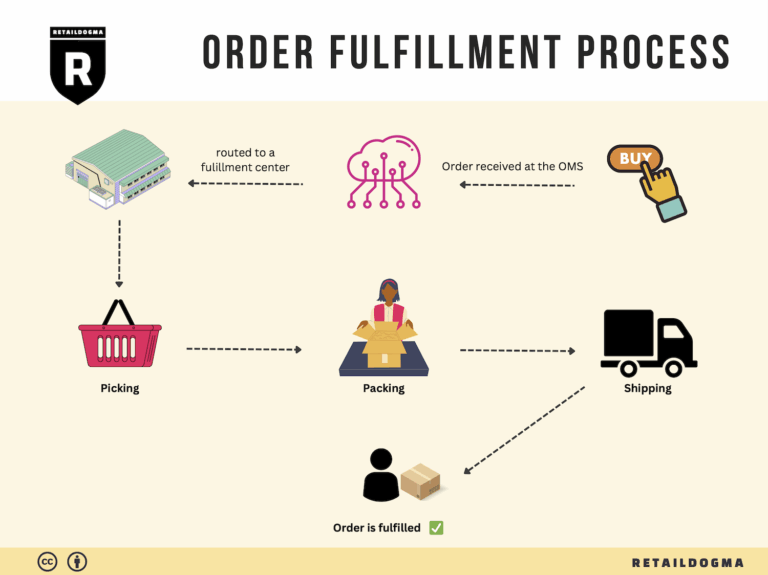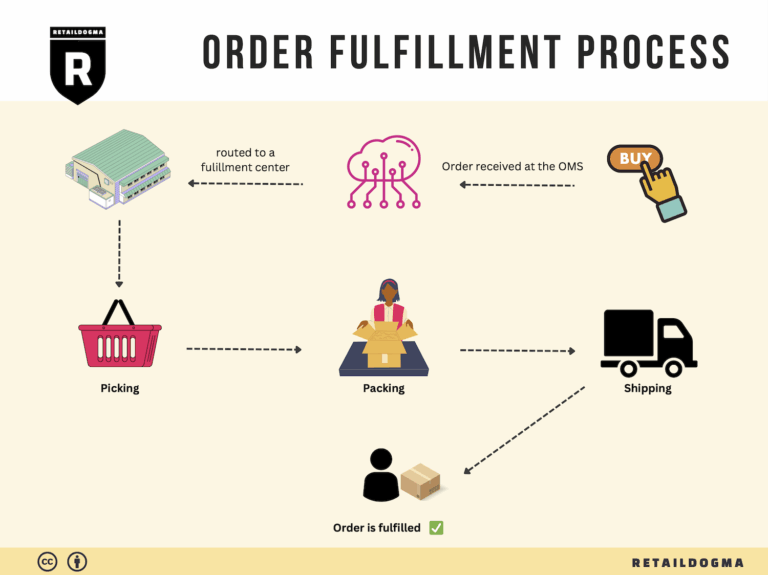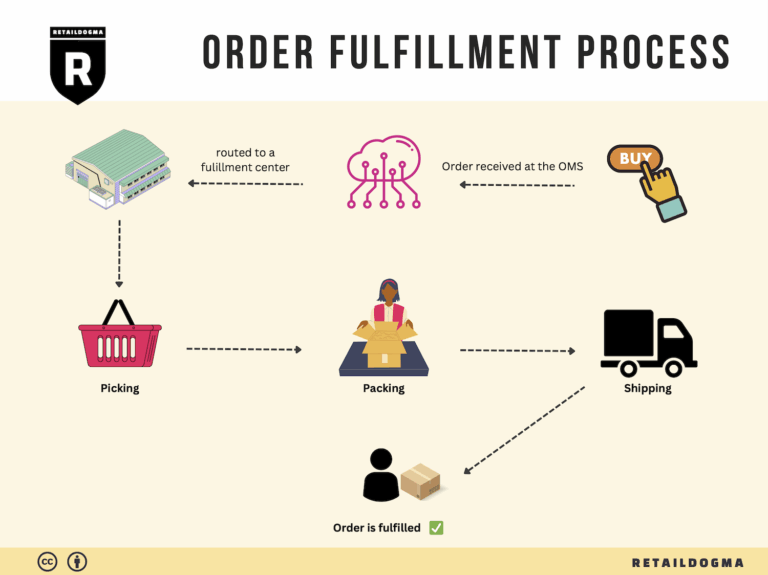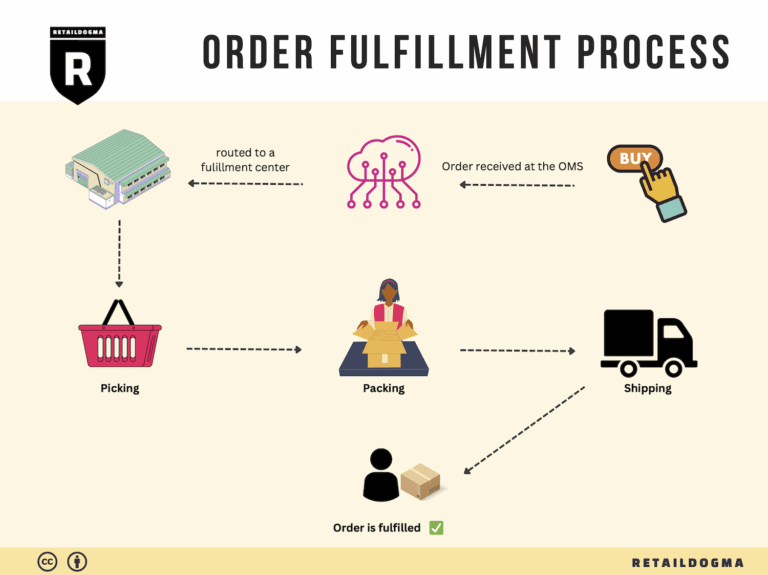Ecommerce Fulfillment Services: The Ultimate Guide (2025)
What is E-commerce Fulfillment? An Introduction for Growing Businesses
Understanding E-commerce Fulfillment: A Crucial Element for Growth
As an e-commerce business owner, you may find yourself grappling with the complexities of packing and shipping orders. This common pain point can become overwhelming, especially during peak sales periods or when experiencing unexpected surges in demand. Fulfillment—the process of getting a product from your inventory to your customer’s doorstep—is a critical aspect of your operations that can significantly impact customer satisfaction and overall business growth.
In its simplest form, e-commerce fulfillment encompasses all the steps involved in processing and delivering an order. This includes receiving inventory, storing products, picking items from shelves, packing them for shipment, and finally shipping them to customers. While these tasks may seem straightforward, they require careful coordination and efficiency, particularly as your business scales.
This guide aims to demystify e-commerce fulfillment for growing businesses by covering several key areas:
-
Fulfillment Models: We will explore various fulfillment models, including Third-Party Logistics (3PL) and Fulfillment by Amazon (FBA). Understanding these options is essential for determining which approach best aligns with your operational needs and growth strategies.
-
Core Services: We will break down the core services associated with fulfillment, such as inventory management, order processing, shipping, and returns handling. Each of these services plays a vital role in ensuring that your customers receive their orders accurately and on time.
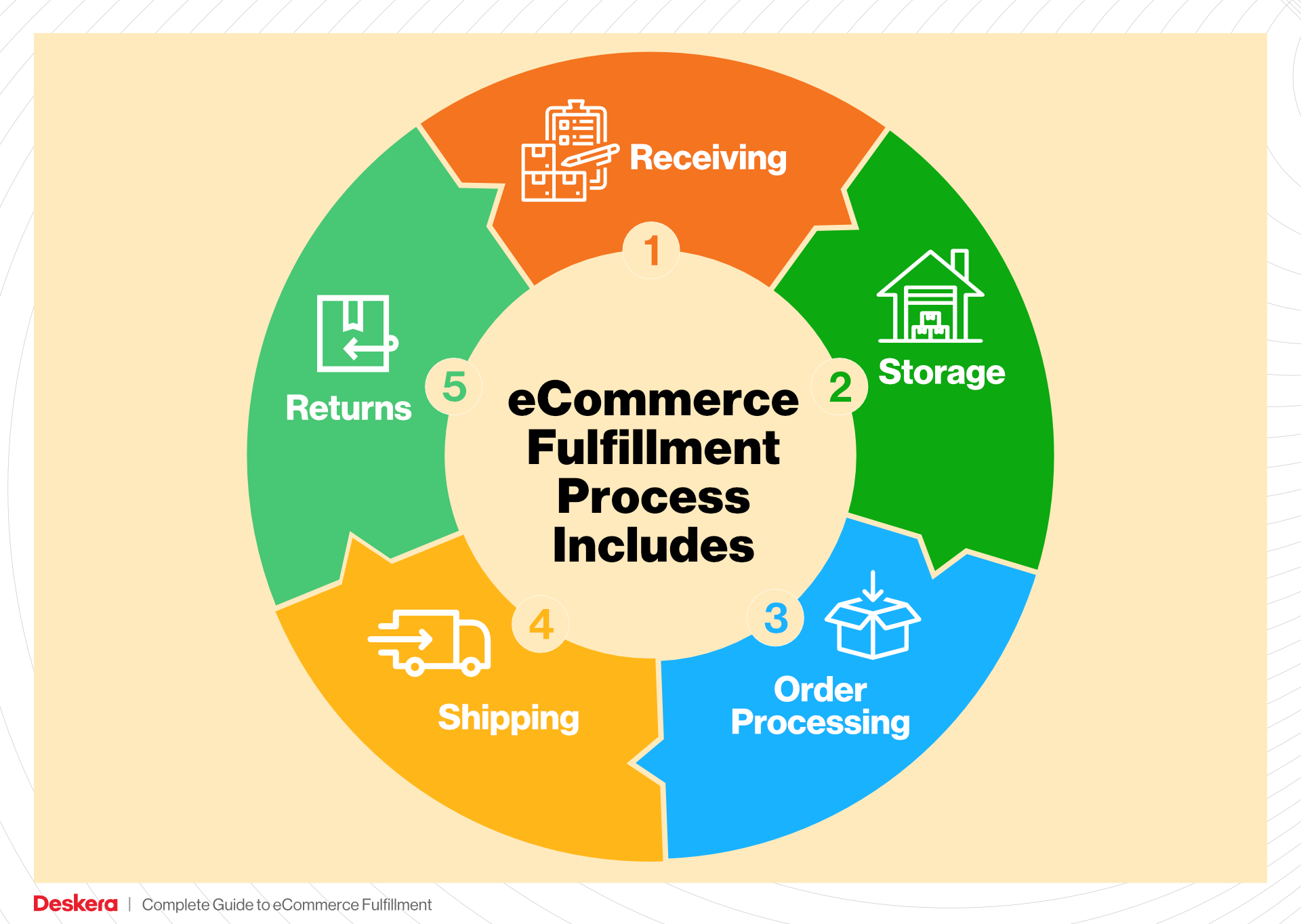
-
Choosing a Fulfillment Partner: Selecting the right fulfillment partner is crucial for your success. We will discuss factors to consider, such as technology integration, service levels, geographical reach, and customer support, helping you make an informed choice that supports your business objectives.
-
Pricing Structures: Understanding the pricing models of fulfillment services is essential for budgeting and cost management. We will outline common pricing structures and what to expect in terms of fees for storage, shipping, and additional services.
The ultimate goal of this guide is to empower you with the knowledge and insights needed to make smart decisions about your logistics strategy. By optimizing your fulfillment process, you can enhance customer experiences, streamline operations, and position your business for sustainable growth. Whether you are just starting or looking to scale, a solid understanding of e-commerce fulfillment will set you on the path to success.
What You’ll Learn In This Guide
- What is E-commerce Fulfillment? An Introduction for Growing Businesses
- The Order Fulfillment Process: From ‘Buy’ Button to Customer’s Door
- Comparing Fulfillment Models: In-House vs. 3PL vs. Dropshipping
- A Deep Dive into Amazon FBA: Pros, Cons, and Who It’s For
- Core Services Offered by Fulfillment Centers
- How to Choose a Fulfillment Partner: A 6-Point Checklist
- Understanding Fulfillment Pricing: A Breakdown of Common Fees
- Frequently Asked Questions (FAQs) about Fulfillment
- Conclusion: Is Outsourcing Fulfillment the Right Move for Your Business?
- Important Disclaimer
The Order Fulfillment Process: From ‘Buy’ Button to Customer’s Door
1. Receiving Inventory
The order fulfillment process begins with the Receiving Inventory stage, where products arrive at the fulfillment center. This initial step is critical as it sets the foundation for all subsequent processes. When inventory is received, it undergoes inspection to ensure that the quantity and quality match the purchase order. The key term associated with this phase is SKU (Stock Keeping Unit), which is a unique identifier for each product variant. Properly managing SKUs helps in tracking inventory efficiently and minimizes errors in order fulfillment.
Accurate receiving is essential because discrepancies at this stage can lead to inventory shortages or excesses, impacting customer satisfaction and increasing costs. By leveraging advanced technology such as barcode scanning and inventory management systems, businesses can enhance accuracy and speed. For instance, LVK Logistics employs sophisticated systems that provide 100% visibility, ensuring that every item is accounted for and correctly stored.
2. Warehouse Storage
Once the inventory is received, it moves to the Warehouse Storage phase. This step involves strategically placing products within the fulfillment center to optimize space and accessibility. Effective storage solutions are crucial for maintaining a smooth workflow and ensuring quick access to items when orders are placed. The concept of slotting is key here; it refers to the practice of determining the best location for each product based on its demand and size.
Proper warehouse storage not only maximizes efficiency but also reduces the time spent locating items during the picking process. By utilizing data-driven slotting strategies, businesses can ensure that high-demand products are stored in easily accessible locations, thereby speeding up the overall fulfillment process. Additionally, LVK’s extensive network of warehouses across North America allows for intelligent inventory distribution, which enhances delivery speed and reduces shipping costs.
3. Order Picking
The next step in the fulfillment journey is Order Picking, where items are retrieved from storage in response to customer orders. This stage is vital as it directly impacts order accuracy and fulfillment speed. The use of pick lists—documents that outline the items to be collected for each order—streamlines this process.
Efficient order picking methods, such as batch picking (where multiple orders are picked simultaneously) or zone picking (where pickers are assigned specific storage areas), can significantly enhance productivity. In this phase, accuracy is paramount; a small mistake in picking can lead to customer dissatisfaction and increased return rates. LVK Logistics employs advanced technologies that ensure accurate picking, reducing human error and improving overall efficiency.
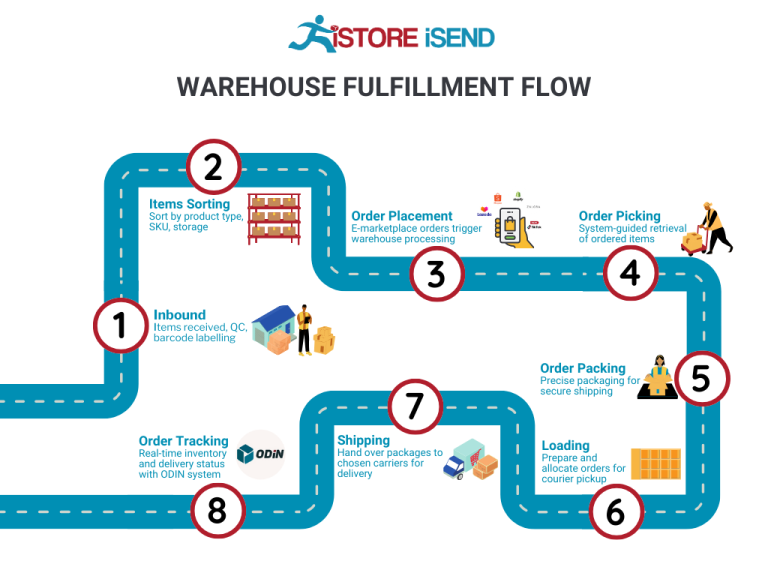
4. Order Packing
After items have been picked, they move to the Order Packing stage. This phase involves securely packaging the products for shipment to ensure they arrive in perfect condition. The use of customized packaging tailored to the specific items not only protects the products but also enhances the customer experience through branded unboxing.
Effective packing is critical because it minimizes damage during transit and can also influence customer perception of the brand. Companies like LVK focus on meticulous packing techniques that align with the brand’s image, ensuring a memorable unboxing experience. Additionally, integrating packing lists and shipping labels into the process helps maintain order accuracy and facilitates smooth shipping.
5. Shipping & Delivery
The final step in the order fulfillment process is Shipping & Delivery, where packed orders are handed over to carriers for transport to the customer. This phase is crucial as it determines the speed and reliability of delivery, which directly affects customer satisfaction. The key term here is last-mile delivery, referring to the final leg of the shipping journey from a distribution center to the end customer.
Timely and efficient shipping is essential for maintaining a competitive edge in e-commerce. Businesses must consider factors such as shipping methods (standard, expedited, overnight), costs, and carrier partnerships. LVK Logistics offers various shipping options tailored to meet different customer needs while ensuring cost-effectiveness. Their robust technology platform provides real-time tracking and visibility, allowing businesses to keep customers informed about their order status.
In conclusion, mastering each step of the order fulfillment process—from receiving inventory to final delivery—is crucial for e-commerce businesses aiming to scale effectively. By implementing best practices at each stage and leveraging advanced technologies, companies can enhance efficiency, reduce costs, and ultimately improve customer satisfaction.
Comparing Fulfillment Models: In-House vs. 3PL vs. Dropshipping
Fulfillment Model Comparison Table
| Model | Who Handles Inventory | Best For (Business Stage) | Key Advantage | Key Disadvantage |
|---|---|---|---|---|
| In-House Fulfillment | Your own team | Startups to mid-sized businesses | Full control over inventory and processes | High operational costs and resource demand |
| Third-Party Logistics (3PL) | External fulfillment provider | Scaling businesses | Expertise in logistics and scalability | Less control over fulfillment processes |
| Dropshipping | Supplier or manufacturer | Startups and low-capital ventures | Low upfront investment and inventory risk | Lower profit margins and dependency on suppliers |
In-House Fulfillment
In-house fulfillment involves managing your own warehousing and logistics operations. This model is typically adopted by startups and mid-sized businesses that want full control over their inventory and fulfillment processes. By handling inventory internally, companies can customize their packaging, streamline their operations, and respond quickly to customer needs. The key advantage of in-house fulfillment is the complete oversight it provides, allowing businesses to maintain quality standards and adapt swiftly to changes in demand. However, this model comes with significant disadvantages, including high operational costs, such as labor, storage, and technology investments. Moreover, scaling operations can be resource-intensive, requiring a substantial commitment to infrastructure and personnel, which may not be feasible for all businesses.
Third-Party Logistics (3PL)
Third-party logistics (3PL) providers like LVK Logistics offer businesses the option to outsource their warehousing and fulfillment needs. This model is particularly advantageous for companies that are in the scaling phase, seeking to optimize their supply chain without the complexities of managing logistics internally. By partnering with a 3PL, businesses can leverage the provider’s expertise in inventory management, shipping, and logistics technology, which can lead to improved efficiency and reduced shipping times. The key advantage of using a 3PL is the scalability it offers; businesses can expand their operations without the significant upfront costs associated with building their own fulfillment infrastructure. However, one of the main drawbacks is the loss of control over the fulfillment process. Companies must rely on their 3PL to maintain quality and accuracy, which can be a concern if the provider does not meet expectations. Additionally, there may be challenges in communication and coordination between the business and the 3PL, particularly during peak seasons or unexpected demand surges.
Dropshipping
Dropshipping is a fulfillment model where a business sells products it does not keep in stock. Instead, when a customer places an order, the business purchases the item from a third-party supplier who then ships it directly to the customer. This model is often favored by startups and entrepreneurs with limited capital, as it requires minimal upfront investment in inventory. The key advantage of dropshipping is that it eliminates the risks associated with holding inventory, such as overstocking or obsolescence. Additionally, it allows business owners to offer a wide range of products without the need for a physical warehouse. However, dropshipping comes with significant disadvantages, including lower profit margins due to reliance on suppliers, potential shipping delays, and limited control over product quality and fulfillment speed. Businesses may also face challenges with customer service, as they cannot directly handle product returns or issues that arise during shipping. This model demands careful selection of suppliers to ensure reliability and maintain customer satisfaction.
Conclusion
Choosing the right fulfillment model is crucial for e-commerce businesses, as it impacts operational efficiency, customer satisfaction, and ultimately, profitability. In-house fulfillment offers control but at a high cost, making it suitable for businesses ready to invest in their logistics infrastructure. In contrast, 3PL providers like LVK Logistics offer a scalable solution with logistics expertise, which can be a game-changer for growing businesses. Finally, dropshipping presents an accessible entry point for entrepreneurs but comes with challenges related to margins and control. Each model has its strengths and weaknesses, and the best choice depends on your business stage, resources, and strategic goals.
A Deep Dive into Amazon FBA: Pros, Cons, and Who It’s For
Understanding Fulfillment by Amazon (FBA)
Fulfillment by Amazon (FBA) is a service that allows sellers to store their products in Amazon’s fulfillment centers. When a customer orders an FBA product, Amazon takes care of storage, packaging, shipping, and customer service on behalf of the seller. This service provides a streamlined logistics solution for e-commerce businesses, enabling them to leverage Amazon’s vast distribution network and customer base.
How FBA Works
-
Product Listing: Sellers create a product listing on Amazon and choose to enroll their products in FBA. They can do this directly through their Amazon Seller Central account.
-
Inventory Shipment: Sellers ship their products to Amazon’s fulfillment centers. Amazon provides guidelines on how to package and label products to ensure they are stored and shipped correctly.
-
Storage: Once the inventory arrives at the fulfillment center, it is stored until an order is placed. Amazon employs sophisticated inventory management systems to track products.
-
Order Fulfillment: When a customer places an order for an FBA product, Amazon picks, packs, and ships the product directly to the customer. The seller is notified of the sale and can track the order through Seller Central.
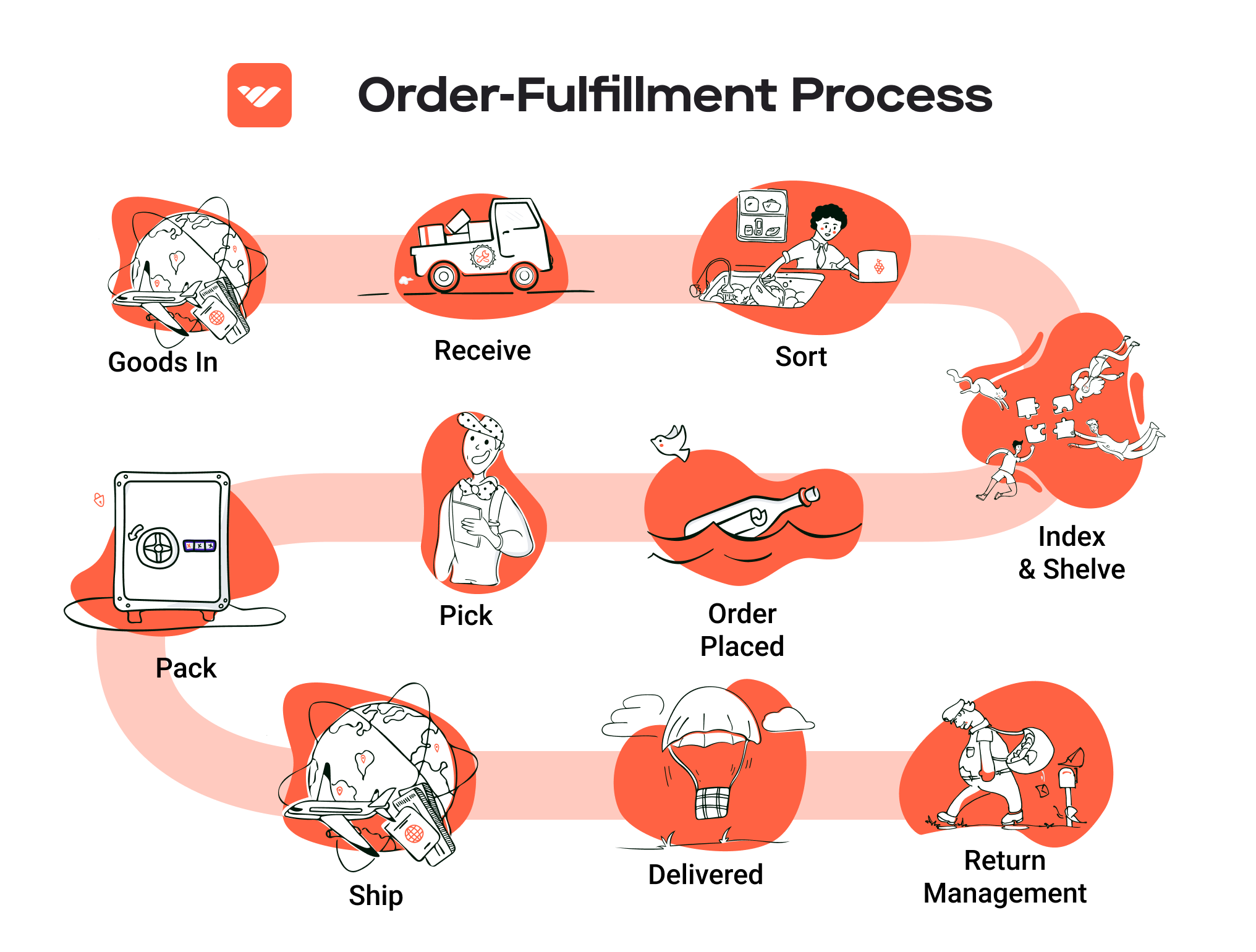
-
Customer Service: Amazon handles all customer service inquiries, including returns and refunds, providing a level of service that enhances customer trust.
-
Payment: Sellers receive payments for their sales, minus Amazon’s fees, which cover storage and fulfillment costs.
Pros of Using FBA
1. Prime Eligibility
One of the most significant advantages of FBA is that products become eligible for Amazon Prime. This increases visibility and attractiveness to a vast customer base that values fast, reliable shipping. Prime members are more likely to purchase products that offer free two-day shipping.
2. Customer Trust
Amazon is a well-known and trusted brand. Using FBA means that products are backed by Amazon’s customer service and return policies. This trust can lead to higher conversion rates, as customers feel more secure purchasing from sellers using FBA.
3. Multi-Channel Fulfillment
FBA isn’t limited to Amazon sales alone. Sellers can use FBA to fulfill orders from other sales channels, including their own websites or other marketplaces. This flexibility allows for a more streamlined inventory and fulfillment process across multiple platforms.
4. Scalability
FBA allows sellers to scale their businesses without the need for significant investment in warehousing and logistics. As sales grow, Amazon can handle increased order volume seamlessly, freeing sellers to focus on other areas of their business.
5. Advanced Logistics
Amazon’s logistics capabilities are unparalleled. Sellers benefit from Amazon’s sophisticated technology for order processing, inventory management, and shipping, which can lead to faster delivery times and improved customer satisfaction.
Cons of Using FBA
1. High Fees
While FBA offers many benefits, it comes with costs that can eat into profit margins. Amazon charges fees for storage, fulfillment, and additional services. These fees can accumulate, particularly for sellers with slow-moving inventory or large product lines.
2. Strict Inventory Rules
FBA requires strict adherence to inventory management practices. Sellers must comply with Amazon’s policies regarding labeling, packaging, and product condition. Failure to meet these standards can result in additional fees or even removal from the FBA program.
3. Commingling Risks
When sellers use FBA, their inventory may be commingled with that of other sellers. This means that a seller’s products could be sent to customers alongside products from competitors. While this can lead to faster shipping times, it also poses risks, such as receiving damaged or counterfeit goods, which can harm a seller’s reputation.
4. Limited Control
Sellers relinquish some control over their inventory and fulfillment processes. Amazon’s systems dictate how orders are processed, which can be frustrating for sellers who want more autonomy over their logistics.
5. Inventory Storage Limits
Amazon imposes limits on the amount of inventory sellers can store in their fulfillment centers. This can be a limitation for sellers with high inventory turnover or seasonal products, as they may face storage fees or restrictions during peak seasons.
Who is FBA Best For?
Fulfillment by Amazon is particularly advantageous for:
-
Small to Medium-Sized Businesses: These businesses often lack the resources to manage their logistics and fulfillment in-house. FBA offers a way to scale without the overhead of a dedicated logistics team.
-
E-commerce Entrepreneurs: New sellers looking to establish their brand quickly can benefit from Amazon’s vast reach and customer trust.
-
Businesses with High Sales Volume: Companies with a high volume of sales can leverage FBA’s efficiencies, allowing them to focus on product development and marketing rather than logistics.
-
Brands Looking for Prime Exposure: If your products are eligible for Prime, you’ll gain access to a vast customer base that prefers fast shipping.
-
Multi-Channel Sellers: Brands that sell across various platforms can benefit from the streamlined fulfillment process that FBA provides, allowing them to consolidate logistics efforts.
In conclusion, while FBA presents some challenges, its benefits can significantly outweigh the drawbacks for many e-commerce businesses. Sellers must carefully evaluate their business model and product offerings to determine if FBA aligns with their growth strategy.
Core Services Offered by Fulfillment Centers
Inventory Management & Warehousing
Inventory management and warehousing are foundational services provided by fulfillment centers, enabling e-commerce businesses to efficiently store and track their products. This service involves receiving inventory, categorizing it, and maintaining optimal stock levels to meet customer demand without overstocking or stockouts.
Fulfillment centers utilize advanced warehouse management systems (WMS), such as ShipHero, to offer real-time visibility into inventory levels, location, and movement. This technology ensures that businesses can quickly assess their stock situation and make informed decisions about reordering and inventory turnover.
Benefits:
1. Improved Accuracy: Automated systems reduce human error in inventory counts, leading to more accurate stock levels.
2. Cost Efficiency: Efficient inventory management minimizes holding costs and reduces the capital tied up in unsold stock.
3. Enhanced Customer Satisfaction: With accurate inventory tracking, businesses can fulfill orders promptly, resulting in quicker delivery times and higher customer satisfaction.
4. Scalability: As businesses grow, fulfillment centers can adjust storage solutions to accommodate increased inventory without the need for additional warehouse space.
Pick and Pack Services
Pick and pack services are crucial for the order fulfillment process, where items are selected (picked) from inventory and packaged (packed) for shipment. Fulfillment centers employ skilled staff and automated systems to ensure that orders are picked accurately and packed according to specific requirements, such as branding or product fragility.
This service often includes customized packing options that enhance the unboxing experience, which is especially important for direct-to-consumer brands looking to create memorable customer interactions.
Benefits:
1. Speed and Efficiency: Fulfillment centers streamline the picking and packing process, allowing for faster order processing and shipping.
2. Customization: Businesses can provide unique packing experiences that reflect their brand, improving customer engagement and loyalty.
3. Reduced Errors: With trained personnel and advanced technology, fulfillment centers significantly reduce the risk of picking errors, ensuring customers receive the correct items.
4. Resource Optimization: Outsourcing pick and pack services allows businesses to focus on core activities such as marketing and product development, rather than logistics.
Kitting and Assembly
Kitting and assembly involve grouping various products into a single package or assembling multiple components into a finished product. This service is particularly beneficial for e-commerce businesses that offer bundles, promotional kits, or complex products that require assembly before shipping.
Fulfillment centers are equipped to handle these processes efficiently, ensuring that products are assembled accurately and ready for distribution. This service can include everything from simple bundling of items to complex assembly tasks that require specialized skills.
Benefits:
1. Increased Sales Opportunities: Kitting allows businesses to create product bundles that can attract customers and increase average order value.
2. Streamlined Operations: By outsourcing kitting and assembly, businesses can reduce in-house labor costs and streamline their production processes.
3. Quality Control: Fulfillment centers implement quality checks throughout the kitting process, ensuring that only high-quality products reach customers.
4. Flexibility: As customer preferences change, fulfillment centers can quickly adapt to new kitting requirements without the need for significant capital investment in equipment or labor.
Returns Management (Reverse Logistics)
Returns management, often referred to as reverse logistics, is a critical service offered by fulfillment centers that involves handling product returns efficiently. This service includes processing returned items, assessing their condition, restocking or refurbishing products, and managing customer communications related to returns.
A well-managed returns process is vital for maintaining customer satisfaction and loyalty, as it directly impacts the overall shopping experience. Fulfillment centers employ specialized systems to track returns and integrate them back into inventory seamlessly.
Benefits:
1. Enhanced Customer Experience: An efficient returns process builds trust with customers, as they feel confident in their ability to return products if necessary.
2. Cost Savings: Fulfillment centers can minimize losses associated with returns through effective processing and reselling of returned items.
3. Data Insights: Returns management provides valuable data on customer preferences and product issues, allowing businesses to make informed decisions about inventory and product development.
4. Resource Efficiency: By outsourcing returns management, businesses can focus on growth strategies rather than the complexities of handling returns internally.
In summary, the core services offered by fulfillment centers, such as inventory management, pick and pack services, kitting and assembly, and returns management, play a pivotal role in enhancing operational efficiency for e-commerce businesses. By leveraging these services, businesses can streamline their logistics, improve customer satisfaction, and ultimately scale their operations effectively.
How to Choose a Fulfillment Partner: A 6-Point Checklist
Location & Warehouse Network
The geographic location of your fulfillment partner’s warehouses can significantly impact shipping times and costs. A strategically positioned warehouse network can help ensure faster delivery to your customers, ultimately enhancing their experience and satisfaction.
Questions to Ask:
– Where are your warehouses located, and how many do you operate?
– How do you determine the best locations for inventory distribution?
– Can you provide shipping time estimates to my primary customer locations?
– Do you have the capability to store inventory in multiple locations for better coverage?
Technology & Integrations
In today’s e-commerce landscape, technology plays a crucial role in streamlining operations. A partner that utilizes advanced warehouse management systems (WMS) can offer you real-time visibility into your inventory, orders, and shipping statuses. This transparency is vital for managing customer expectations and making informed decisions.
Questions to Ask:
– What WMS do you use, and how does it integrate with my e-commerce platform?
– Can you provide real-time tracking and reporting capabilities?
– How do you handle inventory management, and what processes are in place for replenishment?
– Are there any limitations to your technology that I should be aware of?
Specializations (e.g., Cold Storage, Oversized Items)
Depending on your product type, you may need a fulfillment partner with specific capabilities. For example, if you sell perishable goods, cold storage facilities are essential. Similarly, if your products are oversized or require special handling, your partner must be equipped to manage these needs effectively.
Questions to Ask:
– What types of products do you specialize in fulfilling?
– Do you have specialized facilities for unique product requirements (e.g., cold storage, fragile items)?
– Can you handle custom packaging or kitting for my products?
– How do you ensure compliance with safety and quality standards for specialized items?
Scalability & Capacity
As your business grows, your fulfillment needs may change. It’s crucial to partner with a fulfillment center that can scale with your operations, whether during peak seasons or as your sales volume increases. A partner with ample capacity can help you avoid fulfillment bottlenecks that could frustrate customers.
Questions to Ask:
– How do you manage fluctuations in order volume, especially during peak seasons?
– What is your capacity for storage and order fulfillment?
– How do you handle unexpected surges in demand?
– Can you provide examples of how you’ve successfully scaled for other clients?
Pricing and Contracts
Understanding the pricing structure and contract terms of your fulfillment partner is essential for budgeting and financial planning. Be wary of hidden fees that can inflate your costs. A transparent pricing model allows you to accurately forecast expenses and assess the overall value of the partnership.
Questions to Ask:
– What is your pricing structure for fulfillment services (e.g., per order, storage fees)?
– Are there any additional fees I should be aware of (e.g., for returns, special handling)?
– What are the terms of your contracts, and is there flexibility for adjustment?
– How do you handle pricing during peak seasons or promotional campaigns?
Customer Support & Reviews
A strong partnership is built on effective communication and support. Choose a fulfillment partner that offers reliable customer service and has a proven track record of client satisfaction. Reading reviews and testimonials can provide insight into the partner’s reliability and responsiveness.
Questions to Ask:
– What levels of customer support do you offer (e.g., dedicated account manager, 24/7 support)?
– How do you communicate with clients about order statuses and any potential issues?
– Can you share case studies or references from other clients?
– What feedback mechanisms do you have in place to ensure continuous improvement?
Conclusion
Choosing the right fulfillment partner is a critical decision that can impact your e-commerce business’s success. By utilizing this checklist, you can systematically evaluate potential partners based on key criteria that align with your specific needs and growth objectives. Taking the time to ask the right questions and assess their capabilities will help ensure a partnership that not only meets your current requirements but also scales with your business into the future.
Understanding Fulfillment Pricing: A Breakdown of Common Fees
Initial Setup Fees
Initial setup fees are the charges incurred when you first partner with a fulfillment center like LVK. These fees cover the costs associated with establishing your account, integrating your systems, and configuring your product catalog. The setup process may include software installation, API integrations with your e-commerce platform, and training on how to use the fulfillment system.
Typically, initial setup fees can range from a few hundred to several thousand dollars, depending on the complexity of your operations and the level of customization required. Factors influencing these costs include the number of SKUs, the specific features you need (such as custom packing options), and the integration with existing software systems. It is advisable to clarify what is included in the setup fee and ensure that you understand any ongoing support that may be necessary after the initial setup.
Receiving Fees
Receiving fees are charged when your inventory arrives at the fulfillment center. This fee accounts for the labor and resources needed to unload, inspect, and inventory your products. The costs can vary based on the volume of items received, the complexity of the receiving process, and any special handling requirements.
Receiving fees are generally calculated on a per-item or per-pallet basis. For example, if your shipment consists of 100 items, the receiving fee might be charged at a fixed rate per item. It is essential to discuss and understand how the fulfillment center processes incoming shipments, as this can significantly impact your overall logistics costs.
Storage Fees (per pallet/bin)
Storage fees are ongoing charges for keeping your products in the fulfillment center’s warehouse. These fees are typically based on the space your inventory occupies, measured in pallets or bins. The storage fee structure can vary; some fulfillment centers charge a flat monthly fee, while others may charge based on the actual cubic footage used.
When evaluating storage fees, consider factors such as inventory turnover rates and seasonal fluctuations in demand. If your products have a longer shelf life or if you plan to hold a significant amount of stock for peak seasons, storage costs can accumulate quickly. Opting for a fulfillment center that offers flexible storage solutions, such as tiered pricing based on volume or duration, can help you manage costs effectively.
Pick & Pack Fees (per item/order)
Pick and pack fees are charges associated with the process of retrieving items from storage and preparing them for shipment. This fee is typically calculated per item or per order, depending on how the fulfillment center structures its pricing. For instance, if a customer orders three items, you would incur a pick and pack fee for each item included in that order.
The complexity of the picking process, such as whether items require special handling or custom packaging, can also influence these fees. Additionally, if you have a high volume of orders, some fulfillment centers may offer discounted rates, so it’s worth discussing your order volume to explore potential savings.
Shipping Fees
Shipping fees encompass the costs associated with transporting your products from the fulfillment center to your customers. These charges can vary widely based on factors such as shipping speed (standard, expedited, overnight), the weight and dimensions of the packages, and the destination.
Most fulfillment centers, including LVK, work with various carriers to provide competitive shipping rates. Shipping fees are typically calculated based on the service level selected (e.g., standard vs. expedited), with additional costs for special services like signature confirmation or insurance. To minimize shipping costs, consider consolidating orders or using regional fulfillment centers that can reduce transit times and distances.
Conclusion: Tips for Getting an Accurate Quote
To obtain an accurate quote from a fulfillment center, it is crucial to provide comprehensive information about your business and specific needs. Here are some tips to ensure you receive a precise estimate:
-
Detail Your Inventory: Clearly outline your SKU count, product dimensions, and weight. This information is essential for calculating storage and shipping fees.
-
Specify Order Volume: Provide an estimate of your monthly order volume to help the fulfillment center assess potential discounts on pick and pack fees.
-
Clarify Shipping Requirements: Discuss your shipping preferences, including desired delivery speeds and any special handling needs.
-
Inquire About Additional Services: If you require custom packaging or kitting, ensure these services are included in the quote.
-
Ask About Hidden Fees: Clarify any potential additional charges that may arise during the fulfillment process, such as returns or inventory adjustments.
By following these guidelines, you can gain a clearer understanding of your fulfillment costs and make informed decisions to optimize your e-commerce logistics strategy.
Frequently Asked Questions (FAQs) about Fulfillment
1. What is a fulfillment center?
A fulfillment center is a specialized warehouse that manages the storage, packing, and shipping of products for e-commerce businesses. Unlike traditional warehouses that may only store inventory, fulfillment centers focus on processing orders efficiently and accurately to ensure timely delivery to customers.
2. What is the difference between a warehouse and a fulfillment center?
While both warehouses and fulfillment centers store products, their purposes differ significantly. A warehouse primarily focuses on inventory storage and management, whereas a fulfillment center is designed to handle the entire order fulfillment process, including picking, packing, and shipping orders directly to customers.
3. What is a 3PL (Third-Party Logistics)?
A 3PL, or Third-Party Logistics provider, is a company that offers logistics services, including warehousing, fulfillment, and transportation. By outsourcing these operations to a 3PL like LVK, e-commerce businesses can focus on their core activities, such as marketing and product development, while benefiting from the expertise and resources of the logistics provider.
4. How much do fulfillment services cost?
The cost of fulfillment services varies based on several factors, including order volume, storage needs, shipping methods, and additional services such as custom packaging. Generally, fulfillment centers charge for storage space, picking and packing services, and shipping costs. It’s advisable to consult with a fulfillment provider like LVK for a tailored quote based on your specific requirements.
5. How does LVK ensure order accuracy?
LVK employs advanced technology and a meticulous process to ensure order accuracy. Each order is processed using a robust Warehouse Management System (WMS), which provides real-time visibility into inventory and order status. Additionally, trained staff members double-check each order during the picking and packing stages to minimize errors.
6. Can I track my inventory in real-time with LVK?
Yes, LVK provides real-time inventory tracking through its integrated technology platform. Clients have 24/7 access to inventory levels, order statuses, and shipping information, enabling them to manage their supply chain effectively and make informed decisions.
7. What types of businesses benefit from using LVK fulfillment services?
LVK fulfillment services cater to a wide range of businesses, including direct-to-consumer (DTC) brands, apparel companies, and consumer packaged goods (CPG) brands. Businesses experiencing rapid growth, seasonal spikes, or those looking to enhance their operational efficiency will particularly benefit from LVK’s tailored fulfillment solutions.
8. How quickly can LVK ship orders?
LVK offers multiple shipping options, including standard (3-7 days), expedited (2 days), and overnight shipping. Orders received before specific cut-off times ship the same business day, ensuring that customers receive their products promptly.
9. What support does LVK provide to new clients?
When you partner with LVK, you receive a dedicated on-site operations team that acts as an extension of your logistics team. This includes an account lead and support staff who assist with onboarding, inventory management, and ongoing optimization to meet your evolving needs.
10. Is LVK technology compatible with major e-commerce platforms?
Yes, LVK integrates seamlessly with leading e-commerce platforms, marketplaces, and shipping carriers. This compatibility allows businesses to streamline their operations, synchronize inventory, and manage orders efficiently, ultimately enhancing the customer experience.
Conclusion: Is Outsourcing Fulfillment the Right Move for Your Business?
Assessing the Benefits of Outsourcing Fulfillment
Outsourcing fulfillment can be a transformative decision for your e-commerce business, unlocking a host of benefits that streamline operations and enhance customer satisfaction. Firstly, partnering with a specialized fulfillment service allows you to save valuable time. Instead of managing inventory, packing, and shipping, you can focus on core business activities such as marketing, product development, and customer engagement. This shift not only improves efficiency but also fosters innovation and growth.
Scalability is another critical advantage. As your sales volume fluctuates—whether due to seasonal trends or viral surges—an experienced fulfillment partner can adapt to your changing needs. For instance, providers like LVK Logistics offer extensive warehousing capabilities and advanced logistics technology, ensuring that your operations can expand or contract seamlessly without the overhead costs associated with managing additional staff or facilities.
Moreover, the expertise that a dedicated fulfillment service brings cannot be overstated. With professionals who specialize in logistics, you gain access to best practices, industry insights, and advanced technologies. This expertise is particularly vital in areas such as inventory management and shipping optimization, which are essential for maintaining a competitive edge in today’s fast-paced e-commerce landscape.
Choosing the Right Partner for Growth
However, the success of outsourcing fulfillment hinges on selecting the right partner. Evaluate potential providers based on their technology, service offerings, and ability to align with your brand’s unique needs. A comprehensive audit of your current shipping processes can help identify whether a fulfillment partner is the right next step for your business.
Take Action
If you’re considering outsourcing your fulfillment, now is the time to take action. Conduct an audit of your existing logistics processes, assess areas for improvement, and explore how a partnership with a fulfillment center like LVK Logistics could elevate your business. By making informed decisions today, you position your brand for sustainable growth tomorrow.
Important Disclaimer
⚠️ Important Disclaimer
The information in this guide is for educational purposes. Fulfillment services, pricing, and platform features change frequently. Always conduct your own due diligence and consult with providers directly before making business decisions.
